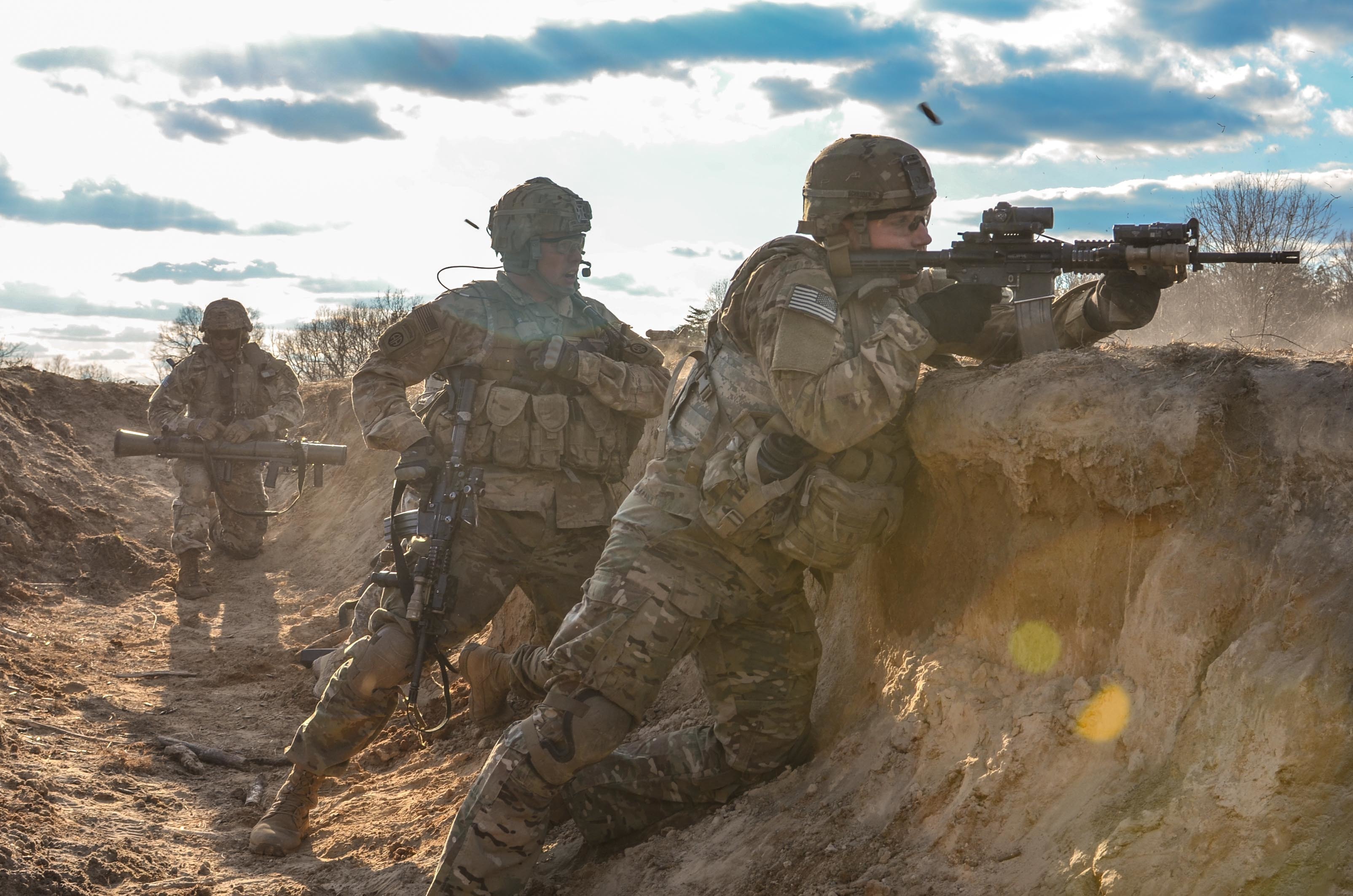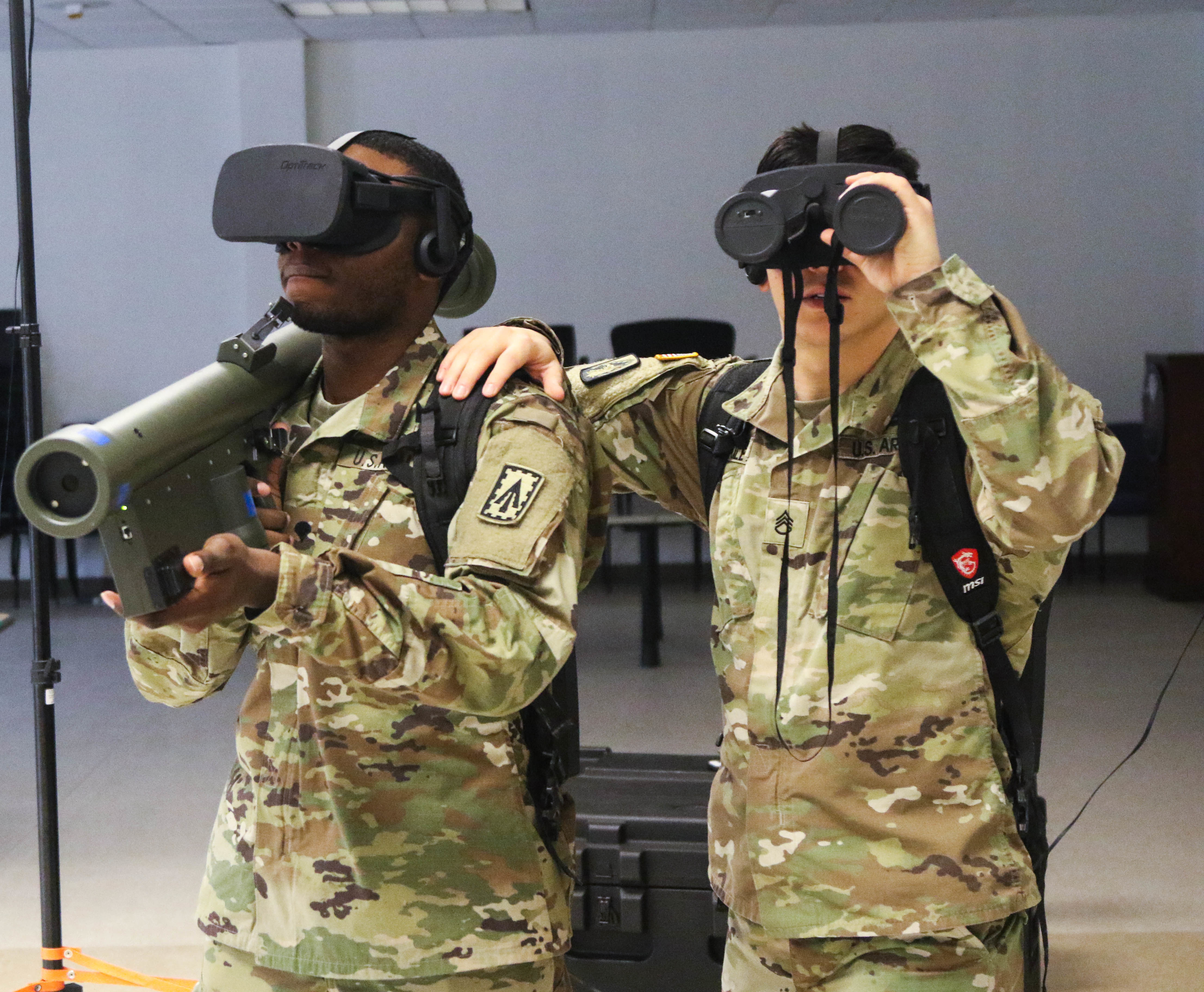
FROM THE ARMY ACQUISITION EXECUTIVE
BRUCE D. JETTE
As the Army focuses on modernizing without delay in its six priority areas, the acquisition culture must change by embracing certain key principles
Gen. Mark A. Milley, Army chief of staff, made clear the reason why there is urgency in modernizing America’s Army, stating, “We know over time that our competitive advantage has eroded and that our overmatch is being challenged in all domains. In today’s increasingly contested domains, the supremacy of our Army is being tested like never before.” It is for this reason that increasing the resources toward modernizing our Army is a necessity, along with changing the way we think, organize and execute our plans and programs.
Our Army acquisition community is at an inflection point where we need to change from the previous industrial-age models of program management and materiel procurement. We must equip Soldiers with the most advanced capabilities possible, and do so as quickly as achievable. Our readiness must allow us to fight across multiple domains in order to deter potential adversaries and, if necessary, rapidly defeat them. Today’s modernization is tomorrow’s readiness. Modernization is an ongoing and evolving extension of our readiness.
America’s Army has spent the better part of two decades at war. During this time, our adversaries have studied our successes and challenges, then mimicked many of those successes and avoided the challenges. In the case of Russia and China, they have invested heavily in their capabilities in an attempt to bring themselves to near-peer status.
Our continuing fight and the constraints of sequestration have had an adverse effect on our ability to advance commensurate with our true technological and operational capabilities. Our “Big Five” remain our Big Five, and have only been incrementally upgraded over time. This approach limits the advancement of capabilities to an evolutionary scale and tends to preclude a revolutionary advancement.
Our acquisition and modernization approaches must change to provide our leaders the flexibility to apply new operational concepts that can ensure unquestioned overmatch, now and at all times in the future. This requires aggressively pursuing technology approaches that may not fare from well-worn paths, as well as those offered by familiar industry. We must make it our culture to know about and pursue innovations that may be more associated with commercial application but which we can leverage for our benefit by applying them, with or without modification, to visionary operational applications.

Paratroopers assigned to Echo Battery, 3rd Battalion, 4th Air Defense Artillery Regiment conduct stinger missile training using the Virtual Stinger Dome (VSD) at Fort Bragg, N.C., Mar. 21, 2018. The VSD is a new training system that utilizes virtual reality technology to immerse soldiers into a digital world allowing for more realistic stinger team training. The 3rd Brigade Combat Team, 82nd Airborne Division, owns one of five systems across the U.S. Army. (Photo by Spc. Houston T Graham, 3rd Brigade Combat Team, 82nd Airborne Division)
A FOUNDATION FOR CHANGE
As the Army Futures Command comes online, we must form a close partnership with those working to develop these operational visions and contribute to them by leveraging our military insight, joined to our technical and programmatic knowledge.
When I say our culture must change, at the core of that change is the need for the acquisition team to see itself as a significant contributor to military thought as well as the Army’s experts in providing material solutions.
To that end, I will be providing a series of papers that outline my thoughts and guidance as the assistant secretary of the Army for acquisition, logistics and technology (ASA(ALT)). I believe senior leaders must provide a clear picture of their vision. We are very fortunate to have like-minded leadership in the secretary, undersecretary, chief of staff and vice chief of staff. All agree that we must work together to quickly advance our overmatch capabilities.
Let me, then, provide foundational concepts for achieving such an operationally oriented approach to acquisition and the culture into which we must transform.
1. Acquisition reform. Our secretary, Dr. Mark T. Esper, has outlined several initiatives to promote unity of effort, focused effort and measurable progress. Unity of effort drives the establishment of a single command structure that, in turn, drives modernization from concept to full DOTMLPF-P [doctrine, organization, training, materiel, leadership, personnel, facilities and policy] delivery to the warfighter in a timely enough manner to make a difference. This is the objective of the Army Futures Command.
The secretary and the chief of staff have made it clear that, for the remainder of their tenure, the top six priorities—long-range precision fires, next-generation combat vehicle, future vertical lift, the Army network, air and missile defense and Soldier lethality—will not change and shall be the focus of the Army’s modernization strategy. Cross-functional teams are the primary mechanism to ensure consistency of progress against known areas requiring development. Measurable progress on the acquisition component of these priorities has already begun as the ASA(ALT) implements an evolvable tracking system. My direction is to avoid any new requirement for data input and, instead, to leverage what exists and to consolidate the data in a manner that will provide insights necessary at the senior level. My objective is to enable our workforce to achieve, not to second-guess it.
2. Accelerated fielding. It is clear that we need a more responsive acquisition system to meet the needs of our Soldiers on time. Let me share with you my experience in this area. Following the tragedies of Sept. 11, 2001, the Army found itself fighting terrorists who effectively employed improvised devices and commercial technologies against our forces in Afghanistan. The formal acquisition process, still in place today and taking an average of 12 years to field a system, could not respond expediently.
In May 2002, I was “afforded” the opportunity to take robots into combat by forming a small team that integrated Defense Advanced Research Projects Agency robots with government and commercial off-the-shelf items. In only 28 days, we took them into the caves of Afghanistan rather than sending Soldiers with grappling hooks and grenades. Robots are now broadly used in combat operations. Perhaps more importantly, this instigated the Army and DOD’s rapid acquisition model. There have been many years in which “rapid” acquisition was seen as an exception to “real” acquisition. We cannot afford “real” acquisition if it is going to take 12 years or even six years.
Our adversaries have revised their Cold War processes to leverage the ever-increasing availability of technology. We must do so as well or lose our overmatch. Culturally, I want all those involved in the acquisition process to look for ways that we can expedite it. This includes eliminating time-consuming and wasteful processes and reports. If my policies cause you to slow down, tell me about them, the recommended action to take, and you will get a response from me. The PEOs have already taken advantage of this.
3. Accelerated technology. Technology is global, and we are in a competition to access both technology and technical talent. Our adversaries have access to much of the same technology that we do. To retain overmatch in an open and pervasive technological environment with a limited budget, we must apply our resources to employ or develop those technologies that will provide the greatest military advantage and, specifically, not spend resources on reinventing what we can buy. The Army must focus our science and technology (S&T) investments on those technologies that contribute to the greatest advancements, first in the six priorities and second in the underlying enablers. ASA(ALT) is developing a policy that will provide a means of funding allocation that requires an increasing degree of foreseeable relevance between a research project and potential military application but also provides clear flexibility for lab directors to look for leap-ahead technologies.
A more disciplined approach to initiating and tracking development management, modeled on the commercial sector, will require that before a new project is started, the lead researcher show that the desired work is not a redevelopment of existing work, that the surrounding known work is well understood, along with the researchers and sources, and that the new work is an extension of the existing knowledge base, not being performed by anyone else.
Finally, a project plan will allow for incremental goals, associated with funding and timelines at which leaders can determine if additional resources are needed, whether goals have been achieved, and if continued work in the area is warranted or an “off ramp” is necessary. Additionally, we are fencing funds specifically to bridge the “valley of death” between research and program application in a deliberate manner and are taking, at the senior leader level, the responsibility for transition rather than leaving it up to the wiles of researchers and PMs.
4. Accountability. We are working to improve the way we do business in order to make the Total Army more lethal, capable and efficient. In doing so, we must ensure that our organizations, policies, processes and tasks that consume time, money and manpower deliver real value.
Today’s acquisition system is based upon an approach that encourages our professionals to follow a preset process and check appropriate boxes. One can complete a process and not have an outcome or product worth anything. This is unacceptable. It wastes time, money and talent. Process is there to facilitate achieving a product. It is NOT the product.

An AH-64 Apache helicopter with 1st Battalion, 3rd Aviation Regiment, 12th Combat Aviation Brigade, and M1 Abrams tanks from 5th Squadron, 4th Cavalry Regiment, 2nd Armored Brigade Combat Team, 1st Infantry Division, secure an area during a combined arms live fire exercise (CALFEX) at Grafenwoehr Training Area, Germany, Mar 28, 2018. (U.S. Army photo by Spc. Hubert D. Delany III / 22nd Mobile Public Affairs Detachment)
CONCLUSION
We must train and develop our workforce to do their jobs in the best way possible, to empower them with the ability to find processes that fit and to influence and change processes that don’t. This will allow for greater flexibility and accountability in the final outcome. In future articles, I will explain in some detail how to manage the processes to achieve a product and what is acceptable risk. I believe that it is essential for senior leaders not merely to tell those executing to take risk, but then to provide the limitation and clarity on what is acceptable risk to take.
Our people are the Army’s greatest asset. Managing talent is an enterprise-level effort to identify, grow and develop future military and civilian acquisition leaders to recognize opportunity, embrace new ideas, manage risk and realize their true potential. As we work to build a better, more responsive acquisition system, it is absolutely vital that members of the acquisition community have senior leadership guidance, encouragement and reassurance to innovate, understand and accept responsibility, and make smart decisions.
I look forward to hearing your opinions, recommendations and ideas as we continue to improve the way we deliver cutting-edge capabilities to our men and women in uniform.
This article is published in the April – June 2018 issue of Army AL&T magazine.
Subscribe to Army AL&T News, the premier online news source for the Acquisition, Logistics, and Technology (AL&T) Workforce.







